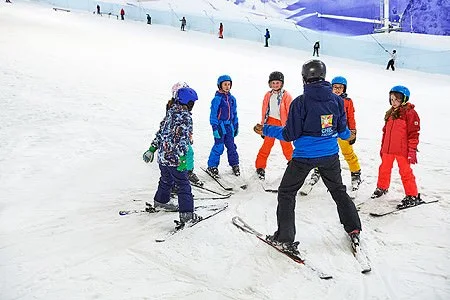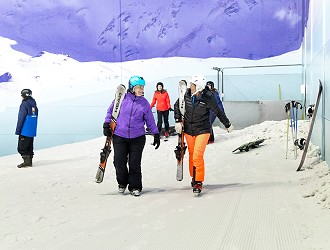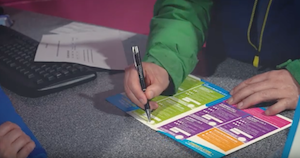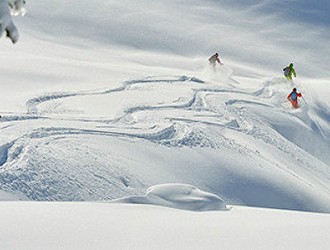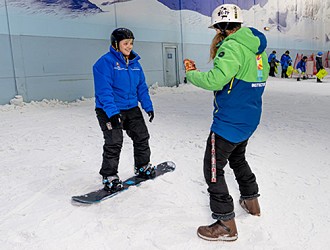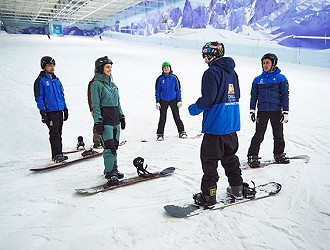Chill Factore explains: What is alpine skiing?
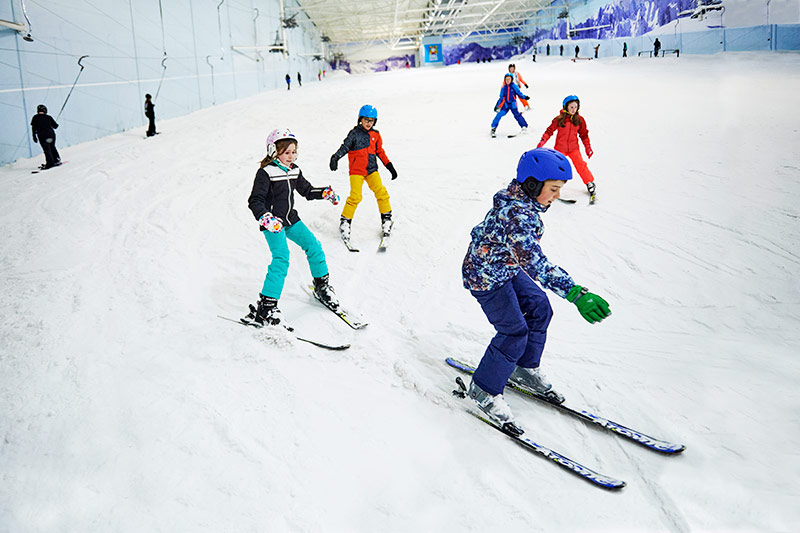
There are many different types of skiing disciplines, but the most popular - by far - is downhill alpine skiing. Many novices may not know the difference between skiing and alpine skiing, but luckily for you, Chill Factore is here to explain. So, what is alpine skiing? Continue reading our helpful guide to find out.
What is alpine skiing?
Alpine skiing is the most popular form of skiing and is the sport of sliding down snow-covered hills on skis. This type of skiing is actually quite commonly known as downhill skiing, although that does incorporate different skiing styles. To efficiently alpine ski, skiers will use free-heel bindings to navigate their way down a slope or snowy mountain.
Alpine skiing can often be competitive and is a major sport at the Winter Olympics. Within alpine skiing, there are four race disciplines. They are slalom, giant slalom, super giant slalom, and downhill. Slalom races have courses that require short, quick turns while giant slalom race courses are set with wider turns.
On super giant slalom races, there are fewer turns with gates much wider apart, which helps them travel at much higher speeds.
How fast do alpine skiers go? Well, in downhill and super giant slalom, an Olympic skier can reach speeds of up to 60 miles per hour (100 km/h) - an astonishing figure!
Why are alpine ski poles bent?
If you’ve ever watched a competitive alpine skiing event you may have noticed that their ski poles are bent. As an avid skier, you may well have your own pair of ski poles but yours aren’t bent. So you’re probably wondering why they are in alpine skiing events.
Well, the answer revolves around aerodynamics. Skiing athletes want to head down a hill or slope as fast as they possibly can so must be aerodynamic. A skier’s poles are a part of their body during the event so they too must be built to be aerodynamic. Having the poles bent in shape to match the skier’s body means they can be held tightly by their side as they hurtle down through gates toward the finish line.
To some people, bending the skis to make them more aerodynamic may seem like a pointless move considering the poles are so thin anyway. However, at the elite level, winners and losers are often separated by fractions of a second, so every little gain counts.
A straight pole and a bent pole could be the difference between winning Olympic gold and finishing as runner-up.
What is the difference between skiing and alpine skiing?
Although the most popular form of skiing is downhill alpine skiing, there are other types too. Here’s a full breakdown of the other types of skiing:
- Cross-country skiing
- Freestyle skiing
- Off-piste skiing
- Telemark skiing
- Adaptive Skiing
Cross-country skiing
Instead of using lifts to climb a slope or mountain, cross-country skiers make their own way up. They also don’t ski down slopes as steep as ones used for downhill alpine skiing, while the setup is different too.
Heels are not attached to the ski which allows skiers to travel over a variety of terrain, not just hills.
Freestyle skiing
Freestyle skiing is a flashy version of downhill skiing. It involves a lot of turns, tricks and collecting air with big jumps on the slopes. This is now a competitive sport with athletes competing in various disciplines that include jumps, choreographed routing, moguls, big air and dual moguls (two competitors head-to-head on the moguls, which are a series of bumps on the slopes).
Off-piste skiing
Off-piste skiing is a type of skiing off the groomed piste on untouched snow. This requires quite an advanced skill level and can be dangerous. It’s a good thing to try once you’ve mastered any intermediate skills on the slopes.
Telemark skiing
Telemark skiing is very similar to alpine skiing. Skiers must make their way to the bottom of the slope or mountain but the only difference is that the skiers doing telemark skiing don’t attach their heels to the skis. It allows for more flexibility and mobility but is dangerous for the unskilled.
Adaptive skiing
Finally, adaptive skiing allows those with a physical disability to participate on the slopes. This is done by using adaptive equipment, allowing everyone to have a great time on the slopes.
Alpine skiing at Chill Factore
Now you know all about what alpine skiing is, you can test your skills and build your confidence on our slope! Did you know that the UK’s longest real snow indoor slope is at Chill Factore?So, what are you waiting for? Head to Chill Factore in Manchester, pick up a Lift Pass and enjoy our real snow slope to develop your skiing skills. Who knows, you may not be far off booking a trip to Europe to enjoy some mountainous regions.
If you’re a novice on the slopes, we can cater for you at Chill Factore. We offer a wide range of ski lessons and snowboarding lessons for people of all ages and abilities. We also offer private lessons for anybody who prefers some one-on-one learning!If you’d like to take advantage of our expert snowsport lessons, book now! If you have any more questions about what you can do at Chill Factore, don’t hesitate to contact us on 0161 749 2222 or email us at info@chillfactore.com.

